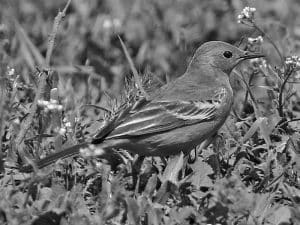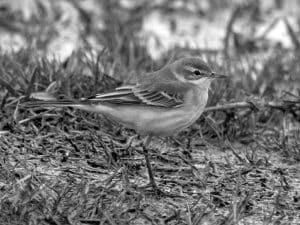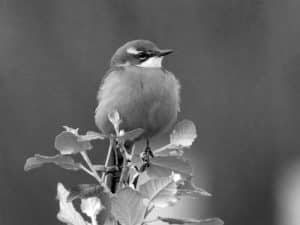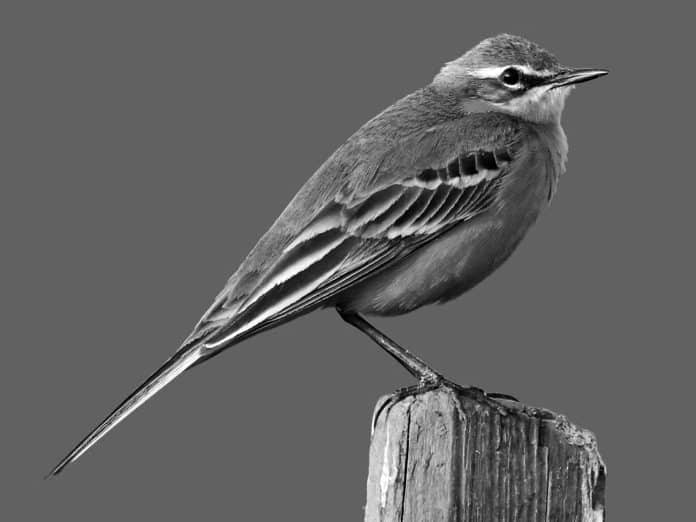Introduction to the Western Yellow Wagtail
Nestled within the diverse avian tapestry of Tanzania lies a captivating species that has captured the hearts of birdwatchers and nature enthusiasts alike – the Western Yellow Wagtail. This diminutive yet charismatic bird “Western Yellow Wagtail in Tanzania”, with its striking yellow plumage and distinctive wagging tail, is a true ambassador of Tanzania’s rich and vibrant birdlife.

As you embark on your journey to explore the wonders of Tanzania’s avian kingdom, the Western Yellow Wagtail is a must-see species that will undoubtedly leave a lasting impression. From its unique physical characteristics to its migratory patterns and fascinating behaviors, this avian wanderer offers a glimpse into the intricate web of life that thrives in the East African nation.
In this comprehensive guide, we will delve into the captivating world of the Western Yellow Wagtail, uncovering its secrets and sharing insights that will enhance your appreciation for this remarkable bird. Whether you are a seasoned birdwatcher or a nature enthusiast eager to discover new wonders, this article will equip you with the knowledge and tools to spot, observe, and appreciate the Western Yellow Wagtail in its natural habitat.
Physical Characteristics of the Western Yellow Wagtail
The Western Yellow Wagtail is a small, slender bird that belongs to the Motacillidae family, known for their distinctive wagging tails. With a length ranging from 16 to 19 centimeters, this species is easily recognizable by its bright yellow plumage, which covers the majority of its body.
During the breeding season, the male Western Yellow Wagtail sports a vibrant yellow head, chest, and belly, with a contrasting black cap and eye stripe. The wings are a deep slate-gray, while the back and rump are a more olive-green hue. The long, slender legs and the constantly wagging tail are hallmark features that distinguish the Western Yellow Wagtail from other wagtail species.
In non-breeding plumage, the bird’s appearance undergoes a transformation. The distinctive black cap and eye stripe are replaced by a more subdued olive-gray head, and the overall yellow hue of the body is less pronounced, with a paler, more muted tone. However, the wagging tail and the bird’s graceful, energetic movements remain constant, regardless of the season.
The Western Yellow Wagtail’s beak is thin and pointed, perfectly adapted for its insectivorous diet, while its large, dark eyes provide keen visual acuity, allowing the bird to spot and pursue its prey with remarkable precision.
Habitat and Distribution of the Western Yellow Wagtail in Tanzania
The Western Yellow Wagtail is a widespread and adaptable species, with a distribution that spans across much of Africa, Europe, and Asia. Within Tanzania, this avian wanderer can be found in a variety of habitats, from the lush wetlands and riverbanks to the open grasslands and agricultural areas.
In Tanzania, the Western Yellow Wagtail is particularly abundant in the northern and central regions of the country, where its preferred habitats thrive. The bird’s preference for open, moist environments, such as marshes, swamps, and the edges of lakes and rivers, makes it a common sight in the Serengeti National Park, the Ngorongoro Conservation Area, and the Tarangire National Park.
Additionally, the Western Yellow Wagtail has adapted to human-modified landscapes, and it is often observed foraging in agricultural fields, pastures, and even urban areas with close proximity to water sources. This adaptability has allowed the species to maintain a stable population within Tanzania, despite the ongoing challenges of habitat loss and environmental degradation.
The Western Yellow Wagtail’s presence in Tanzania is not limited to a specific season; the bird can be observed throughout the year, with some individuals remaining as year-round residents, while others undertake migratory movements in response to seasonal changes and resource availability.
Migration Patterns of the Western Yellow Wagtail
The Western Yellow Wagtail is a remarkable migratory bird, with a complex and fascinating movement pattern that spans across continents. As a long-distance traveler, this species undertakes an annual journey, often covering vast distances to reach its breeding and non-breeding grounds.
During the breeding season, which typically occurs between April and August, the Western Yellow Wagtail can be found in its northern breeding range, which extends from Europe to Central Asia. These migratory birds arrive in Tanzania and other parts of East Africa during the non-breeding season, seeking out the region’s abundant food sources and favorable environmental conditions.
The timing and routes of the Western Yellow Wagtail’s migrations are influenced by a variety of factors, including weather patterns, resource availability, and genetic programming. Some individuals may follow well-established flyways, while others may take more circuitous routes, responding to changing environmental cues and individual preferences.
The arrival of the Western Yellow Wagtail in Tanzania is often a highly anticipated event for birdwatchers and nature enthusiasts. The bird’s presence serves as a harbinger of the changing seasons, signaling the transition from the wet to the dry season and the abundance of insects and other prey that the bird relies on for sustenance.
Understanding the migration patterns of the Western Yellow Wagtail is not only fascinating but also crucial for its conservation, as it allows researchers and wildlife authorities to monitor the bird’s population dynamics and identify potential threats along its migratory corridors.
Behavior and Feeding Habits of the Western Yellow Wagtail

The Western Yellow Wagtail is a captivating and energetic bird, known for its distinctive behavioral traits and foraging habits. As its name suggests, the wagging motion of its long, slender tail is a defining characteristic of this species, and it is believed to serve various functions, from communication to balance and agility.
In their natural habitats, Western Yellow Wagtails are often observed darting across the ground, perching on rocks, and flitting from one vantage point to another, constantly wagging their tails in a rhythmic motion. This behavior is thought to be a means of communication, with the wagging serving as a signal to potential mates, rivals, and prey.
The Western Yellow Wagtail is a highly active and agile forager, relying on its keen eyesight and quick reflexes to locate and capture a variety of prey. Its diet consists primarily of small insects, such as flies, beetles, and spiders, which it often pursues on the ground or in the air, using its slender beak to pluck them from the vegetation or the water’s surface.
In addition to its insectivorous diet, the Western Yellow Wagtail has also been observed feeding on small seeds, berries, and even small fish and tadpoles, depending on the availability of resources in its habitat. This adaptability and versatility in foraging strategies contribute to the bird’s success in a variety of environments.
The Western Yellow Wagtail is known for its social nature, often forming small flocks or feeding in close proximity to other individuals of the same species. These social interactions may involve courtship displays, territorial defense, and the sharing of information about valuable food sources.
By understanding the unique behavioral and feeding habits of the Western Yellow Wagtail, you can enhance your birdwatching experience and gain a deeper appreciation for this captivating species.
Conservation Status of the Western Yellow Wagtail in Tanzania
The Western Yellow Wagtail is classified as a species of Least Concern by the International Union for Conservation of Nature (IUCN), indicating that its global population is stable and not currently facing significant threats. However, the species’ conservation status within Tanzania warrants closer attention.
In Tanzania, the Western Yellow Wagtail is considered a relatively common and widespread bird, with stable populations across the country. However, the species is not immune to the various environmental challenges that are impacting Tanzania’s biodiversity, such as habitat loss, degradation, and fragmentation.
The expansion of agricultural land, urbanization, and the conversion of natural wetlands and grasslands into human-modified landscapes can pose a threat to the Western Yellow Wagtail’s preferred habitats. Additionally, the use of pesticides and other agrochemicals in agricultural areas can potentially impact the availability and quality of the bird’s insect prey.
To ensure the long-term conservation of the Western Yellow Wagtail in Tanzania, it is essential to implement comprehensive environmental protection measures, including the preservation of wetlands, the promotion of sustainable agricultural practices, and the mitigation of urban sprawl. Ongoing monitoring and research efforts are also crucial in understanding the species’ population dynamics and identifying potential threats.
Furthermore, raising public awareness and engaging local communities in conservation initiatives can foster a deeper appreciation for the Western Yellow Wagtail and its role in Tanzania’s vibrant ecosystem. By working together, we can ensure that this captivating avian wanderer continues to grace the landscapes of Tanzania for generations to come.
Tips for Birdwatching and Spotting the Western Yellow Wagtail in Tanzania

Birdwatching in Tanzania offers a wealth of opportunities to observe the Western Yellow Wagtail in its natural habitat. With a little patience, keen observation, and some insider tips, you can increase your chances of spotting this charismatic bird during your travels.
- Timing and Locations: The best time to spot the Western Yellow Wagtail in Tanzania is during the non-breeding season, typically from September to April. Focus your birdwatching efforts in areas with abundant water sources, such as wetlands, riverbanks, and the edges of lakes and ponds, as these are the bird’s preferred habitats.
- Observation Techniques: Keep a sharp eye out for the Western Yellow Wagtail’s distinctive wagging tail and bright yellow plumage. The bird’s energetic movements and tendency to forage on the ground or low vegetation make it relatively easy to spot, but it’s important to move slowly and quietly to avoid startling the bird.
- Binoculars and Cameras: Equip yourself with a good pair of binoculars and a camera with a telephoto lens to enhance your birdwatching experience. These tools will allow you to observe the Western Yellow Wagtail’s features in detail and capture stunning photographs to commemorate your sightings.
- Guided Tours and Local Expertise: Consider joining a guided birdwatching tour or hiring a local guide who is familiar with the Western Yellow Wagtail’s behavior and preferred habitats. These experts can provide valuable insights and increase your chances of spotting this elusive bird.
- Patience and Persistence: Birdwatching often requires a great deal of patience and persistence. Be prepared to spend time observing the habitat, listening for the bird’s distinctive calls, and waiting patiently for the Western Yellow Wagtail to make an appearance.
By following these tips and embracing the art of birdwatching, you can embark on an unforgettable journey to discover the captivating Western Yellow Wagtail in the enchanting landscapes of Tanzania.
Interesting Facts about the Western Yellow Wagtail
The Western Yellow Wagtail is a truly fascinating bird, with a wealth of intriguing facts and characteristics that add to its allure. As you explore the world of this avian wanderer, consider the following fascinating insights:
- Subspecies Diversity: The Western Yellow Wagtail is a highly variable species, with numerous recognized subspecies that differ in their plumage, size, and geographic distribution. This diversity adds to the bird’s captivating visual appeal and the challenges of identification.
- Migratory Feats: The Western Yellow Wagtail is known for its remarkable migratory journeys, with some individuals covering distances of up to 12,000 kilometers between their breeding and non-breeding grounds. This feat is a testament to the bird’s endurance and adaptability.
- Tail Wagging Significance: The distinctive wagging motion of the Western Yellow Wagtail’s tail is believed to serve multiple purposes, including communication, balance, and even the detection of prey. This behavior is a unique adaptation that sets the species apart from other birds.
- Versatile Foraging Strategies: While the Western Yellow Wagtail is primarily insectivorous, it has been observed feeding on a diverse range of prey, including small fish, tadpoles, and even berries. This adaptability allows the bird to thrive in a variety of environments.
- Cultural Significance: In some regions, the Western Yellow Wagtail has held cultural significance, with the bird’s presence being associated with good luck or used as a symbol in traditional folklore and art.
These fascinating facts, and many more, contribute to the Western Yellow Wagtail’s allure and the joy of discovering this captivating species in the wild landscapes of Tanzania.
Other Bird Species Found in the Same Habitat as the Western Yellow Wagtail in Tanzania
The Western Yellow Wagtail is just one of the many remarkable bird species that can be observed in the diverse habitats of Tanzania. As you explore the areas where the Western Yellow Wagtail thrives, you may also encounter a variety of other avian wonders, each with its own unique characteristics and adaptations.
In the wetlands, riverbanks, and open grasslands where the Western Yellow Wagtail resides, you might spot the majestic African Fish Eagle, the graceful Saddle-billed Stork, or the vibrant Lilac-breasted Roller. The Kori Bustard, the largest flying bird in Africa, may also make an appearance, while the elusive Pel’s Fishing Owl may be found lurking in the shadows.
In the surrounding woodlands and forests, you may encounter the striking Crowned Crane, the diminutive Sunbird, or the enigmatic Bateleur Eagle. The Carmine Bee-eater, with its vibrant plumage, is a common sight, while the Abdim’s Stork and the Glossy Ibis add to the avian diversity.
By familiarizing yourself with the other bird species that share the same habitats as the Western Yellow Wagtail, you can enhance your birdwatching experience and gain a deeper understanding of the intricate web of life that exists within Tanzania’s natural landscapes.
Conclusion: Appreciating Tanzania’s Avian Wanderer – the Western Yellow Wagtail
As you journey through the captivating landscapes of Tanzania, the Western Yellow Wagtail stands out as a true ambassador of the country’s rich and diverse birdlife. This charismatic avian wanderer, with its striking yellow plumage and distinctive wagging tail, is a testament to the natural wonders that thrive in this East African nation.
Through this comprehensive guide, you have gained a deeper understanding of the Western Yellow Wagtail’s physical characteristics, habitat preferences, migration patterns, and fascinating behaviors. By exploring the bird’s role within Tanzania’s ecosystems and the conservation efforts aimed at protecting it, you can develop a heightened appreciation for this remarkable species and its place in the larger tapestry of Tanzania’s biodiversity.
As you continue your journey to explore Tanzania’s avian wonders, consider joining a guided birdwatching tour or reaching out to local conservation organizations to learn more about the Western Yellow Wagtail and other threatened species. Your support and engagement can contribute to the ongoing efforts to protect and preserve Tanzania’s natural heritage for generations to come.
The Western Yellow Wagtail is a true gem, a captivating bird that embodies the essence of Tanzania’s vibrant and dynamic birdlife. By embracing the opportunity to observe, appreciate, and advocate for this avian wanderer, you can deepen your connection to the natural world and become a steward of Tanzania’s remarkable avian treasures.

































